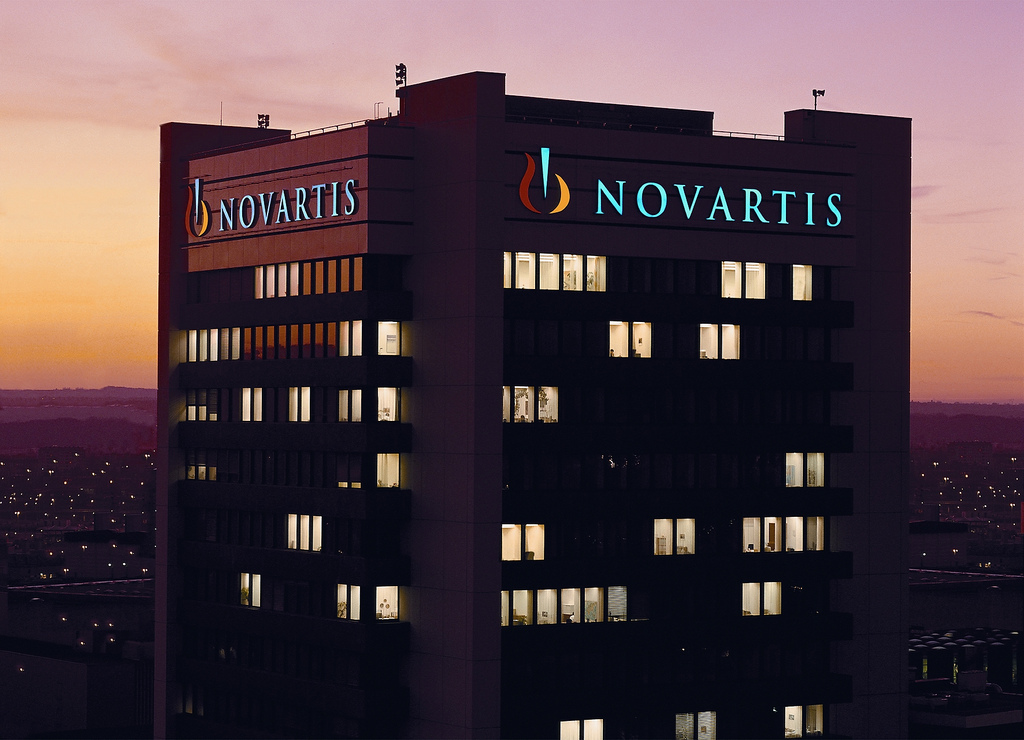
Novartis AG (ADR) (NYSE:NVS) just announced that the FDA has approved its oncology asset, Zykadia, as a first-line therapy in lung cancer patients. Specifically, the drug is now available for prescription in patients with metastatic non-small cell lung cancer (NSCLC) whose tumors are anaplastic lymphoma kinase (ALK)-positive. Prior to this approval, the asset was limited as a second-line option for patients who progressed on or are intolerant to Xalkori (crizotinib). The approval is good news for Novartis and the shareholders, but there is the potential for some serious competition just around the corner, and this sort of takes the edge off the achievement.
Here is what’s important.
First, it’s worth mentioning that this drug isn’t a massive seller in its second line indication for Novartis. The drug generated a little over $91 million in revenues last year, as compared to the more than $560 million that the above-mentioned Xalkori generated across the same period for its maker of Pfizer Inc. (NYSE:PFE). With that said, however, its potential application as a first-line treatment promises to boost what are essentially lackluster sales going forward. Well, that’s the hope. As we will get to in a little bit more detail shortly, there’s a competitive pressure that could hamper this potential.
Anyway, the drug itself is part of a family of drugs called combined ALK and ROS1 inhibitors. Its mechanism of action (MOA) is rooted in its ability to function as a protein kinase inhibitor by competitive binding within what’s called the ATP-binding pocket of target kinases. Through this process, it inhibits tyrosine kinase, which is one of the c-Met/Hepatocyte growth factor receptors (HGFRs) responsible for oncogenesis in malignant neoplasms. There’s also a degree of evidence that suggests it inhibits angiogenesis, but the primary MOA is as described above.
The FDA first approved the drug in 2011 for a small lung cancer population, and then again as an expanded approval in March last year for patients with ROS1-positive non-small cell lung cancer.
The latest approval is based on some data that Novartis collected as part of what it called the ASCEND-4 trial. It was a phase III that pitched the drug against first-line pemetrexed-platinum chemotherapy followed by pemetrexed alone as a maintenance therapy. As demonstrated by the trial data, patients treated with first-line Zykadia had a median progression-free survival (PFS) of 16.6 months compared to 8.1 months for those in the control arm.
That’s strong data, and the drug was pretty much a shoo-in for expanded approval ahead of the FDA’s decision. It’s also in a similar application stage in Europe, and again, it’s pretty much a shoo-in for a regulatory green light on that side of the Atlantic.
So that’s good news.
The bad news is that all of this might not matter in a couple of years. Roche Holding Ltd. (ADR) (OTCMKTS:RHHBY) is developing its own asset of this type, an ALK inhibitor called Alecensa. The drug is already approved for first-line ALK-positive NSCLC in Japan, a region in which Roche commands almost two-thirds market share versus Xalkori. In a phase III study that wrapped up early 2017, Alecensa proved more effective and more tolerable, than Xalkori, and data from this study forms the basis of registration applications that are set to be submitted to the relative authorities in the US and Europe, the FDA and the EMA respectively, before the end of this year.
If and when these authorities green light the drug, there’s a good chance that it will quickly redirect market share from both Xalkori and Zykadia towards its own script counts, and this is bad news for Pfizer and Novartis both.
Right now, then, for Novartis, it’s all about getting this drug in the hands of as many physicians (and by proxy, patients) as possible before Roche can mount a challenge in this patient population. If the company can establish a strong patient base ahead of a regulatory thumbs up for Alecensa in the US (and Europe) then it might be able to mitigate the competitive pressures somewhat.




